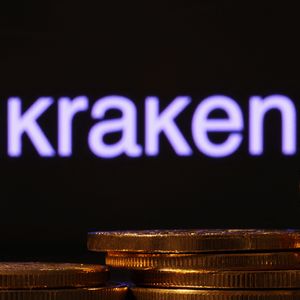SBI Group’s new tie-up with Chainlink has ignited a debate inside the XRP community: is Ripple’s long-standing beachhead in Japan at risk, or is SBI building a broader stack that still leans on XRP for settlement? The partnership, announced over the weekend, will see Chainlink’s interoperability and data infrastructure deployed for financial-market use cases in Japan first and then across Asia-Pacific, including tokenized funds, regulated stablecoins and payment-versus-payment (PvP) foreign-exchange workflows. XRP Vs. Chainlink? The contours of the deal are explicit: SBI says it will leverage Chainlink’s Cross-Chain Interoperability Protocol (CCIP) to move messages and assets across networks; use Chainlink’s data tooling to bring fund net asset value (NAV) data on-chain for tokenized funds; and apply Chainlink’s Proof of Reserve to verify that stablecoins are fully backed. In parallel, SBI continues a flurry of digital-asset initiatives, including separate agreements with Ripple and Circle last week. That remit overlaps with but does not replicate Ripple’s utility inside SBI’s payments stack . Since 2021, SBI Remit has run live XRP-based corridors out of Japan—first into Philippine wallets and, by 2023, into bank accounts in the Philippines, Vietnam and Indonesia—using XRP as a bridge asset to eliminate pre-funding. Ripple’s Japan–Thailand flow, powered with Siam Commercial Bank, predates even that. SBI VC Trade, the group’s licensed crypto exchange, also lists XRP. These are production rails, not proofs-of-concept. The new Chainlink alignment is therefore best read through division of labor. Chainlink’s CCIP is an interoperability and messaging layer; it is not a payments network that provides working capital or market-making liquidity. Chainlink’s Proof of Reserve is an attestation service to automate reserve checks for stablecoins and other tokenized assets. In industry pilots—from DTCC’s “Smart NAV” to Sygnum/Fidelity’s on-chain fund data—Chainlink has been the plumbing that standardizes data and connects chains, rather than the rail that actually moves fiat value. That framing is precisely what one prominent community pundit argued as the announcement landed. “Chainlink handles the instructions and data,” wrote pundit Ripple Van Winkle (X: @RipBullWinkle). From there, his analysis constructs a clear separation of roles. “But here’s the key: Chainlink doesn’t provide liquidity. It can route trades. It can prove reserves. It can sync data across chains. But when it comes to actually settling value? That’s not Chainlink’s role.” In his view, the SBI partnership plugs Chainlink into the orchestration layer—governing cross-chain messages, validating collateral and standardizing data—without supplanting the asset that actually bridges currency pairs in production remittances. He anchors that to SBI’s existing footprint: “SBI Remit uses XRP in live corridors (Japan→Philippines, Vietnam, Thailand).” He underscores that the token’s status in Japan is not a theoretical placeholder but a live, regulator-recognized crypto asset: “XRP is regulator-approved in Japan as a crypto asset.” The implication inside his thread is straightforward: where tokenized cash is not present, and where rapid, low-friction cross-border flows are required, XRP remains the bridge asset SBI already relies on. On the scope of the new collaboration, the pundit calls it “big league infrastructure,” listing the focus areas as “Tokenized funds & real-world assets (real estate, bonds), Regulated stablecoins, FX settlement with Payment-vs-Payment (PvP), [and] Liquidity + compliance rails for institutions.” He then itemizes what Chainlink brings to that stack: “CCIP → Cross-chain interoperability & messaging,” “SmartData (NAV) → Fund pricing / data oracles,” and “Proof of Reserve → Audits + compliance.” In a single line summary: “Translation: Chainlink handles the instructions and data.” Both Can Co-Exist For SBI Where many in the community framed the announcement as an either-or decision for SBI, he pushes back. “This is where Ripple + XRP stay critical.” He contends that XRP is the piece that “bridges currencies where tokenized cash isn’t available,” while Ripple—through its software, partnerships and operational rails—serves as “the liquidity muscle.” That is a direct rejoinder to the “threat” framing, arguing complementarity rather than substitution. His most quotable shorthand crystallizes the architecture he believes SBI is building: “Think of it like this: Chainlink = Control Layer (messaging, compliance, data), Ripple/XRP = Settlement Layer (bridging money across borders), SBI = The Integrator combining both into one financial stack.” The assignment of roles is intentionally modular: Chainlink to secure and move instructions across chains; Ripple/XRP to move value across markets; SBI to integrate and choose the optimal rail per corridor and instrument. That leads to his headline conclusion. “So does this threaten Ripple? No. It expands the rails.” In his words, “SBI is hedging smartly — building a multi-rail system. That way tokenized FX, stablecoins, and RWAs on Chainlink rails… …can still settle in XRP when needed. SBI isn’t choosing Chainlink over Ripple. They’re choosing both. Because the future of finance isn’t one-rail. It’s interoperability + liquidity. And that puts XRP in the perfect spot to settle everything.” At press time, XRP traded at $2.92.
















